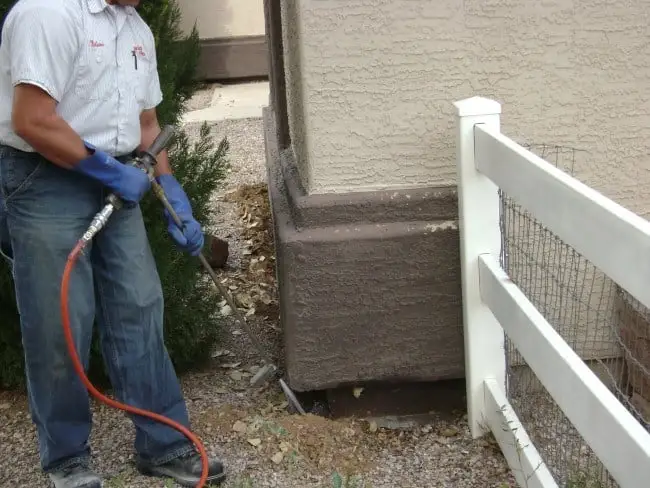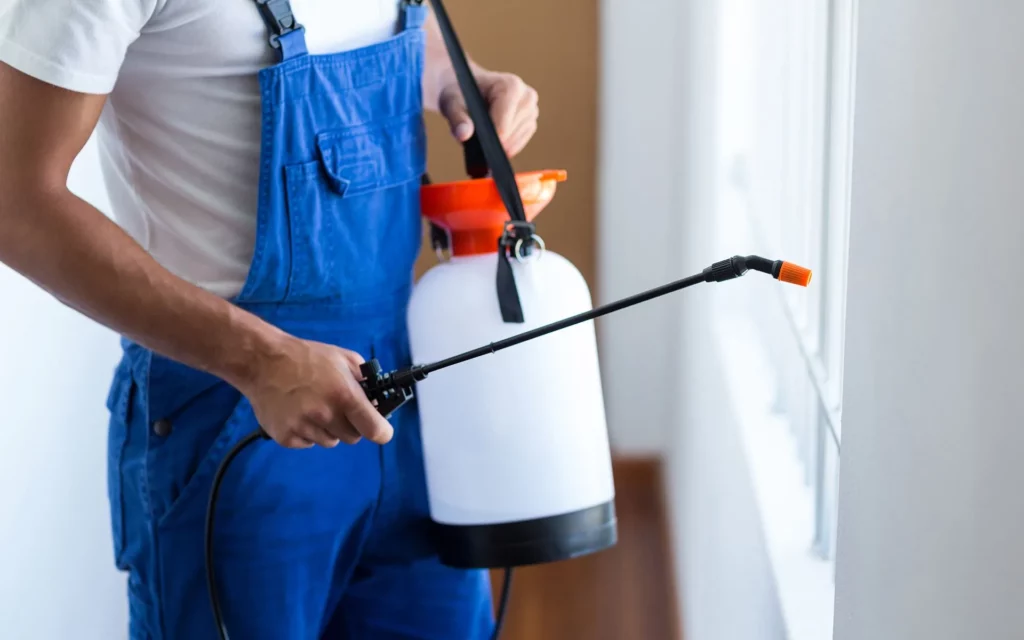Termites are a homeowner’s worst nightmare. These tiny, destructive pests can cause significant damage to the structure of your home if not addressed promptly. In Dubai, termite infestations are not uncommon, and homeowners must be proactive in finding the best anti termite treatment to protect their property. With various many options available, it can be challenging to decide whether a DIY approach or seeking help from a professional company like Infinity Services is the right choice for you.
Therefore, in this blog, we’ll discuss the various anti termite treatment methodologies, compare DIY and professional services, and provide answers to some most asked questions. But before any of this, let’s get clear on what these treatments are exactly.
What are Anti Termite Treatments?
Anti termite treatments are methods used to eliminate, control, and prevent termite infestations in homes and other structures. Termites are wood-destroying insects that can cause thorough damage to buildings if left untreated. There are various anti termite treatment methodologies that can be used to protect the property from termite damage by either killing the termites directly, disrupting their behavior, or creating barriers to prevent them from accessing the structure.
Signs to Look Out for Termite Infestation
Before deciding on a termite treatment method, it’s essential to recognize the signs of an infestation. Some common indicators of termite activity include:
Mud tubes: Subterranean termites create mud tubes to travel between their colony and food source. These tubes, made from soil and wood particles, can often be found along your home’s foundation or walls.
Swarming insects: Termites swarm when they’re ready to establish a new colony, and seeing winged termites near your home can be a sign of infestation.
Hollow sounding wood: Termites eat wood from the inside out, leaving behind a hollow or papery sound when tapped.
Frass: Drywood termites produce wood-colored fecal pellets called frass, which can often be found near infested areas.
Damaged wood: Look for wood that appears blistered, discolored, or weakened, as this may be a sign of termite activity.
DIY Anti Termite Treatments
You can get rid of termites or even prevent infestations with the use of some basic remedies. Some of the most popular DIY methods include:
- Boric Acid: A common home treatment for termites, boric acid can be applied to wood surfaces or mixed with bait to eliminate termites in walls and wooden floors.
- Diatomaceous Earth: This natural, non-toxic powder can be spread around the foundation of your home to deter termites from entering.
- Neem Oil: An organic solution, neem oil can be used to treat termite-infested wood by either painting it on or spraying it directly onto the affected area.
- Vinegar: A mixture of vinegar and water can be sprayed onto termite-infested areas, killing the pests upon contact.
Professional Anti Termite Treatment
Professionals employ various methods to get rid of termite infestations effectively. The specific approach may vary depending on factors such as the type of termites, the severity of the infestation, and the construction of the building. Here are some common methods used by professionals to eliminate termite infestations:

- Soil Trenching Method
In the soil trenching method, we remove 2 to 3 inches wide and 4 to 5 inches deep slightly loose soil from the property’s perimeter. This makes a trench. Then we flood it with a termiticide spray mix to eliminate termites. This method is also good for when you want a termite prevention service.
- Drilling And Injecting Method
We make holes 8 to 18 mm in diameter 1 to 1.15 m apart from each other. Then we inject the termiticide spray mix with pressure in these holes made around the infested area. This creates a termiticide barrier against the termites. This method is used for post-construction termite treatments.
Read also: Why Are Termites Harmful? – Reasons To Get Termite Control
DIY vs. Professional: What’s Your Cup of Tea?
To help you make an informed decision, let us weigh the pros and cons of DIY and professional termite treatments:
DIY Termite Treatment Pros:
- Cost-effective: DIY treatments can be more affordable than professional services, especially for minor infestations.
- Convenient: You can apply DIY treatments at your own pace without waiting for a professional to arrive.
- Non-toxic options: Many DIY treatments, such as diatomaceous earth and neem oil, are eco-friendly and safe for your family and pets.
DIY Termite Treatment Cons:
- Limited effectiveness: DIY treatments may not be as effective as professional methods, especially for larger or more severe infestations.
- Time-consuming: DIY termite treatment requires time and effort to research, purchase, and apply the solutions.
- Lack of expertise: Without professional training, you may miss signs of termite infestations or apply treatments incorrectly, leading to further damage.
Professional Termite Treatment Pros:
- Expertise: Professional technicians are trained to identify and treat termite infestations effectively, ensuring the problem is fully addressed.
- Advanced methods: Professionals have access to the latest treatment technologies and can customize a plan for your specific needs.
- Long-term prevention: Professional termite treatments often include ongoing monitoring and maintenance to ensure termites do not return.
- Warranties: Many professional termite treatment companies offer warranties, providing peace of mind and protection for your investment.
Professional Termite Treatment Cons:
- Cost: Professional termite treatments can be more expensive than DIY methods, especially for extensive infestations or advanced treatment options.
- Scheduling: You’ll need to coordinate with a professional company to schedule an inspection and treatment, which may be less convenient than handling the issue yourself.
Meanwhile, when it comes to choosing the best anti termite treatment for your home, both DIY and professional options have their pros and cons. While DIY treatments can be cost-effective and convenient, they may not provide the long-term protection and expertise that a professional service like Infinity Services can offer. We make sure to provide you with a seamless 60-second booking process that helps you schedule your services in no time. Moreover, we provide our services 24/7, meaning you can book the session at any time of the day that suits you the best!
Ultimately, the choice depends on the severity of the infestation, your budget, and your comfort level with handling termites on your own. Regardless of the method you choose, it’s crucial to address termite issues promptly to protect your home and your investment.
Infinity Services: Your Trusted Termite Treatment Partner in Dubai
At Infinity Services, we understand the importance of protecting your home from termite damage. Our expert technicians are trained in the latest anti termite treatment methodologies and are committed to providing the premium level of service to our clients. With a range of treatment options, ongoing monitoring, and maintenance plans, you can trust our professionals to keep your home termite-free. Contact us today to schedule a termite inspection and learn more about our comprehensive termite treatment solutions.
Related FAQs
What is most effective treatment for termites?
The most effective treatment for termites depends on the severity of the infestation and the type of termite. Professional services typically offer the most comprehensive and effective solutions, using a combination of baiting systems, liquid treatments, and fumigation.
What are some methods of anti termite treatment?
There are several methods of anti termite treatment, including baiting systems, liquid termiticides, fumigation, and natural remedies like boric acid, diatomaceous earth, and neem oil.
What kills termites the fastest?
Fumigation is often considered the fastest method for killing termites, as it involves using a gas to penetrate the entire structure, killing termites in a matter of hours. However, it is also the most invasive and costly method and is typically reserved for severe infestations.
How to treat termites in a wood floor?
To treat termites in a wood floor, identify the infested areas, remove and replace the affected wood, and apply a termiticide specifically designed for wooden structures. Take preventive measures to avoid future infestations.
How to treat termites in walls?
Treating termites in walls involves drilling small holes and injecting termiticides directly into the termite galleries. Foaming treatments can also be used to reach wall voids. Regular monitoring and preventive measures are essential to prevent future infestations.


